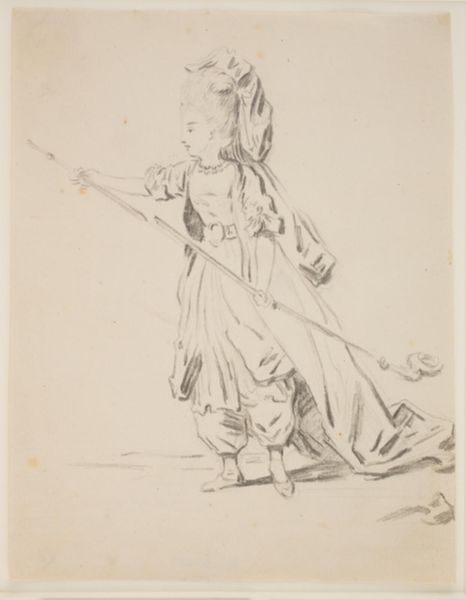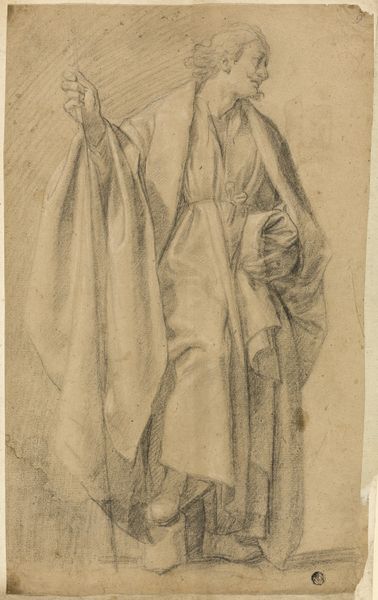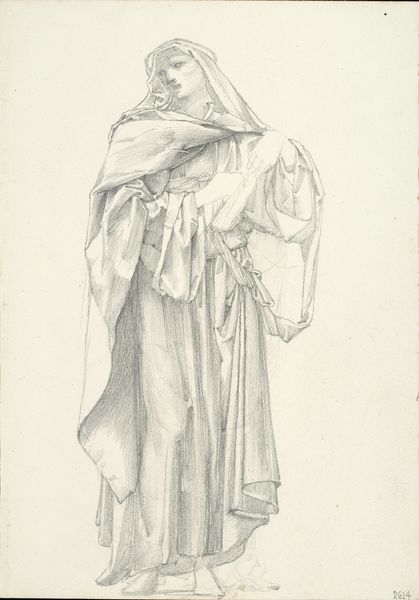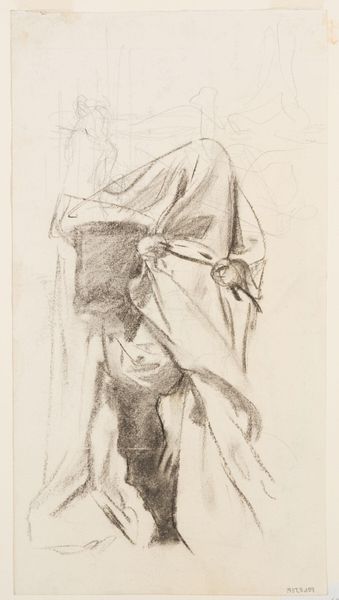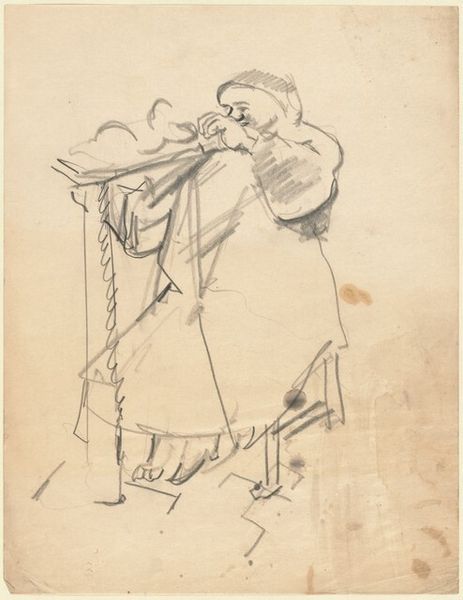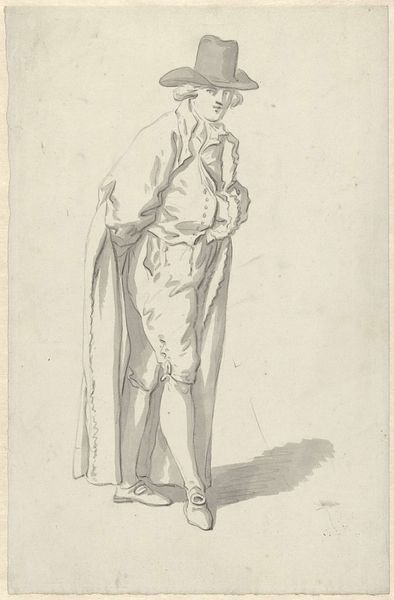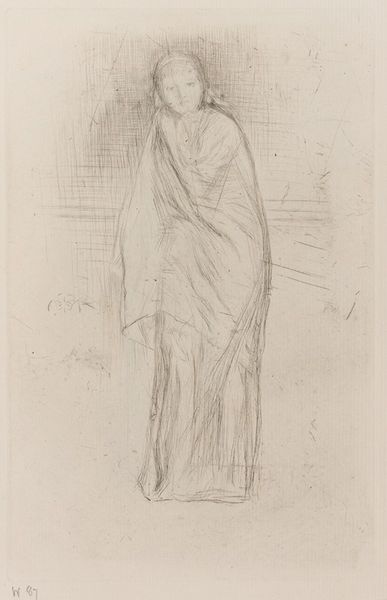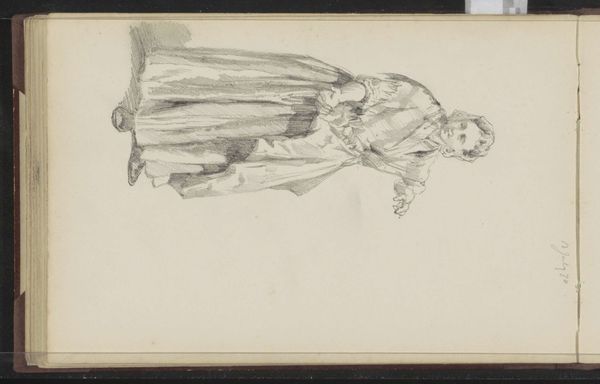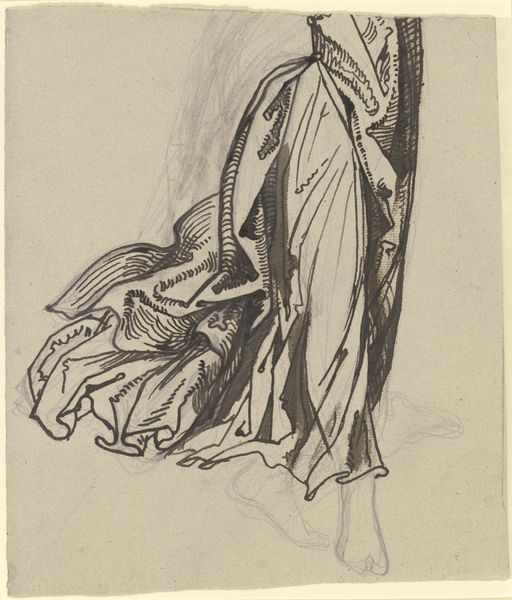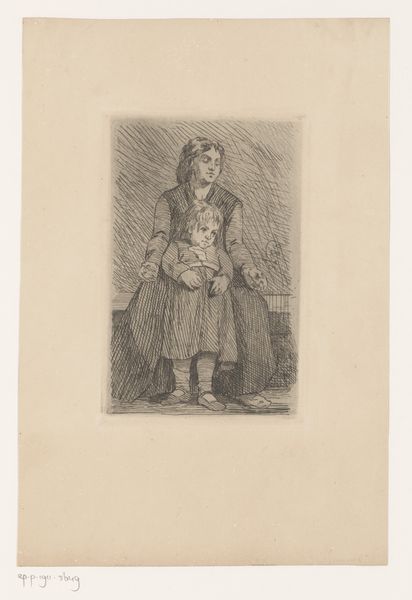
drawing, pencil
#
portrait
#
pencil drawn
#
drawing
#
pencil sketch
#
pencil
#
realism
Copyright: Public Domain: Artvee
Editor: So this is Whistler's "Annie Haden," a pencil drawing from 1860. It's interesting how the figure seems almost swallowed by her clothing and set against a draped backdrop, like she is on stage or being presented for viewing. What can you tell me about how this piece was perceived in its time? Curator: That's a great observation. Remember, Whistler was deeply engaged in the art world debates surrounding Realism versus Aestheticism. While seemingly a straightforward portrait, consider the context of the rising middle class and their desire for portraits reflecting social standing. The choice to depict Annie Haden in such a theatrical pose – wrapped in elaborate fabrics – could be read as a commentary on the performance of identity itself within that society. What kind of political statement do you think Whistler was trying to convey? Editor: Hmm, maybe that social status and identity can be constructed through fashion and performance? Curator: Precisely! And note the ambiguity in her gaze, which refuses direct engagement. This challenges traditional portraiture which reinforced ideals of stability, but instead this presents a young woman whose image becomes another artifact consumed by viewers. Editor: It is interesting that even in a portrait, an artist could be commenting on social values and the politics of presentation. Curator: Exactly. By moving beyond simple representation and into visual commentary, artists like Whistler engaged audiences in new, reflective ways, altering the public role of art. Now do you think museums played a part in all of this? Editor: Absolutely! Museums, by selecting which artworks to showcase, were then influencing public perception and shaping art history itself. That’s pretty powerful. Thanks for breaking it down, it gives the artwork a fresh meaning!
Comments
No comments
Be the first to comment and join the conversation on the ultimate creative platform.
